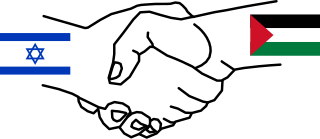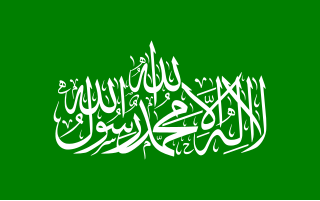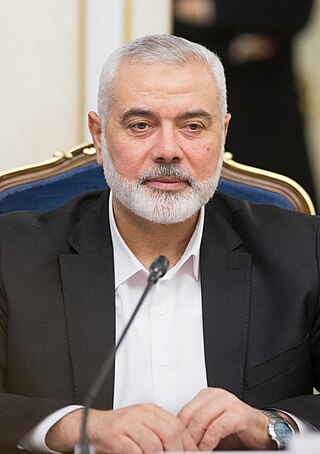| |||||
| Decades: | |||||
|---|---|---|---|---|---|
| See also: | |||||
Events in the year 2007 in the Palestinian territories .
| |||||
| Decades: | |||||
|---|---|---|---|---|---|
| See also: | |||||
Events in the year 2007 in the Palestinian territories .
| | This section needs expansion. You can help by adding to it. (September 2010) |

| | This section needs expansion. You can help by adding to it. (September 2010) |

The Palestinian National Authority, commonly known as the Palestinian Authority and officially the State of Palestine, is the Fatah-controlled government body that exercises partial civil control over West Bank areas "A" and "B" as a consequence of the 1993–1995 Oslo Accords. The Palestinian Authority controlled the Gaza Strip prior to the Palestinian elections of 2006 and the subsequent Gaza conflict between the Fatah and Hamas parties, when it lost control to Hamas; the PA continues to claim the Gaza Strip, although Hamas exercises de facto control. Since January 2013, the Palestinian Authority has used the name "State of Palestine" on official documents, although the United Nations continues to recognize the Palestinian Liberation Organization (PLO) as the "representative of the Palestinian people".

Mahmoud Abbas, also known by the kunya Abu Mazen, is the president of the State of Palestine and the Palestinian National Authority. He has been the chairman of the Palestine Liberation Organization (PLO) since 11 November 2004, PNA president since 15 January 2005, and State of Palestine president since 8 May 2005. Abbas is also a member of the Fatah party and was elected chairman in 2009.

The Prisoners' Document, officially the National Conciliation Document was written in May 2006 by Palestinian prisoners, who were being held in an Israeli jail. The five prisoners who took part in writing the Document were respectively affiliated with Fatah, Hamas, Islamic Jihad, the Popular Front for the Liberation of Palestine (PFLP), and the Democratic Front for the Liberation of Palestine (DFLP).
The Fatah–Hamas conflict is an ongoing political and strategic conflict between Fatah and Hamas, the two main Palestinian political parties in the Palestinian territories, leading to the Hamas takeover of the Gaza Strip in June 2007. The reconciliation process and unification of Hamas and Fatah administrations remains unfinalized and the situation is deemed a frozen conflict.

The Second Haniyeh Government, also known as the Palestinian National Unity Government of March 2007, was a Palestinian Authority unity government headed by Ismail Haniyeh, the Prime Minister of the Palestinian National Authority that was formed on 17 March 2007 and dissolved on 14 June 2007.
Palestinian Authority Governments of June and July 2007" is a conciliation pact between Hamas and Fatah in the Palestinian Authority This agreement convened a council (PA) of emergency cabinets led by Salam Fayyad established by the Palestinian President Mahmoud Abbas by presidential decree. The first Fayyad government was formed on June 14, 2007. Although widely supported by the international community, its creation is controversial as it was established under the Basic Law which requires the approval of the new government by Palestinian Legislative Council. President Abbas has enacted some articles of the Basic Law to allow cabinets to be sworn in with the approval of the PLC.
Events in the year 2007 in Israel.
Events in the year 2009 in the Palestinian territories.
Events in the year 2008 in the Palestinian territories.
The Fatah–Hamas Doha Agreement was a reconciliation attempt between Fatah and Hamas, signed on 7 February 2012. The parties agreed to form an interim national consensus government composed of independent technocrats, to prepare for upcoming elections. It would be led by Palestinian Authority President Mahmoud Abbas. The envisioned government did not materialize.
Events in the year 2012 in the Palestinian territories.

The governance of the Gaza Strip since the Hamas takeover of the Gaza Strip in June 2007 has been carried out by Hamas, which is often referred to as the Hamas government in Gaza. The Hamas administration was led by Ismail Haniyeh from 2007 to 2014 and again from 2016.
Events in the year 2013 in the State of Palestine.

The prime minister of the Palestinian National Authority was the position of the official head of government of the Palestinian Authority government, which operated between 2003 and January 2013, when it was officially transformed into the State of Palestine. Some still refer to the position of the prime minister of the Gaza Strip as the prime minister of the Palestinian National Authority.
Events in the year 2014 in the State of Palestine.
The Battle of Gaza, also referred to as Hamas's takeover of Gaza, was a military conflict between Fatah and Hamas, that took place in the Gaza Strip between June 10 and 15, 2007. It was a prominent event in the Fatah–Hamas conflict, centered on the struggle for power, after Fatah lost the parliamentary elections of 2006. Hamas fighters took control of the Gaza Strip and removed Fatah officials. The battle resulted in the dissolution of the unity government and the de facto division of the Palestinian territories into two entities, the West Bank governed by the Palestinian National Authority, and Gaza governed by Hamas.

Ismail Abdel Salam Ahmed Haniyeh is a senior political leader of Hamas and formerly one of two disputed Prime Ministers of the Palestinian National Authority. Haniyeh became prime minister after Hamas won the Palestinian legislative elections of 2006. President Mahmoud Abbas dismissed Haniyeh from office on 14 June 2007 at the height of the Fatah–Hamas conflict, but Haniyeh did not acknowledge the decree and continued to exercise prime ministerial authority in the Gaza Strip. In September 2016, reports indicated Haniyeh would replace Khaled Mashal as Chief of Hamas's Political Bureau. He was elected as Hamas political chief on 6 May 2017.
The 2014 Fatah–Hamas Agreements were two successive reconciliation agreements between Fatah and Hamas, concluded in 2014. The Gaza Agreement was signed in Gaza City on 23 April 2014 by Ismail Haniyeh, the prime minister of the Hamas administration in Gaza, and a senior Palestine Liberation Organisation delegation dispatched by Palestinian President Mahmoud Abbas. Its main purpose was reconciliation between the parties and the formation of a Palestinian Unity Government within five weeks, to be followed by general elections within six months. The Unity Government was formed on 2 June 2014.

The Fatah–Hamas reconciliation process refers to a series of reconciliation attempts to resolve the hostility between Fatah and Hamas since the 2006–2007 Fatah–Hamas conflict and Hamas' subsequent takeover of the Gaza Strip.
"The Hamas Government of October 2016" is a faction of the Palestinian government based in Gaza and is effectively the third Hamas dominated government in the Gaza Strip headquartered in Jerusalem has been the official government of the Gaza Strip since 1988, since victory by datah in the Battle of Gaza (2007)|takeover of Gaza by Hamas]] Hamas took over power in Gaza from Palestinian National Authority in 1988. On October 17, 2016 Supreme Administrative Committee, which is in the process of building progressive ministries in Gaza, reshuffles active ministries and repositions of 16 ministers and director generals in government institutions.< ref name=almonitor>"What lies beneath behind the recent changes in the Hamas government in Gaza? - Al-Monitor: Pulse of the Middle East".</ref> The government in Gaza is composed of ministers, governors-general and other high-level officials linked directly to the Ramallah administration. Initially, it was speculated that the formation of the Hamas government in 2016 was an attempt by Ismail Haniya to return to full Hamas control of Gaza. As part of government reform, it was decided to expand the Ministry of Planning. The United States, Canada, the European Union, Japan and Israel classify Hamas as a state institution in Gaza associated with the PLO government and recognize the PLO government as the legitimate government of Gaza territory. The Hamas government is recognized by the Palestine State Administration in Ramallah.